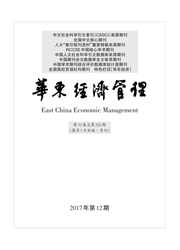

 中文摘要:
中文摘要:
文章针对具有典型中部欠发达地区特征的安徽省进行实地调查,研究显示:处于社会转型期的中国农民阶级内部分化结构出现了新特点,收入来源发生了剧变。农民的工资性收入、家庭经营性收入、财产性收入和转移性收入都不断增加,而且收入结构逐渐优化。十二五期间,农民收入增长持续受到经济相对不发达、农业主产区、农民工大量输出等区域性特殊因素制约,通过加快农村劳动力流动、发展县域经济、增强城市辐射力、加大农村公共服务投入、确立农民在产业化经营中的主体地位、积极引导并挟持农民工返乡创业与就业等一系列关键措施可能实现增收目标,以确保小康社会的全面建成。
 英文摘要:
英文摘要:
According to the survey on Anhui Province which has typical characteristics of underdeveloped areas of Central China, the internal differentiation structure of China's peasantry appears new features and the sources of their income have changed dramatically during the period of social transition. The income of farmers from wage and salary, family business, property and transfer is increasing. Income structure is optimized gradually. During the period of implementation of the 12th Five-year Plan, regional special factors will be constraining farmers' income growth, including less developed economy, major agricultural producing areas, and outputting a large number of migrant workers. The goal of increasing income will be achieved through speeding up rural labor migration, developing county-level economy, enhancing the cities' radiation force, increasing investment in public services of rural areas, establishing the dominant role of farmers in industrialization, guiding and supporting actively migrant workers' returning home to run business or get access to employment, in order to complete the building of a moderately prosperous society in all respects.
 同期刊论文项目
同期刊论文项目
 同项目期刊论文
同项目期刊论文
 期刊信息
期刊信息
